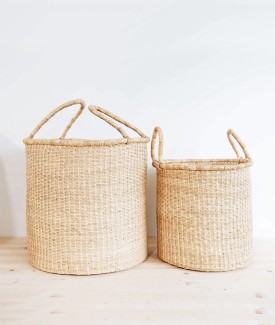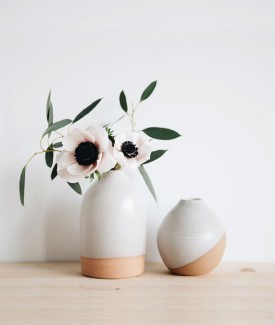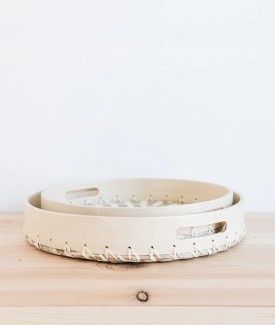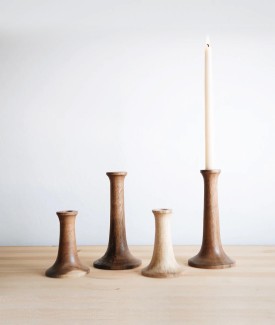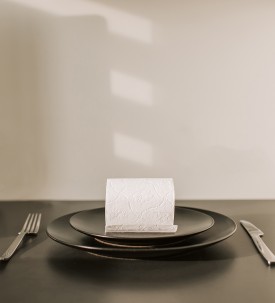All Categories
Home Decor
- Sep 11 2022
How to plant your living pot
Categories: Decor StoreCone 6 White porcelain. Wins most vitrified award. Super smooth and creamy. Glazes are bright and brilliant on this clay. Great if you are staining clay bodies with mason stains or oxides (Nerikomi/Agateware). Cone 6 Shrinkage 13.0% Absorption 0.3% Gray (White) Stoneware. This is the clay we used to provide in the communal buckets. - Sep 11 2022
Pigd's final three classes
Categories: Decor StoreLast Friday’s Zoom topic is on for today. Betty Woodman! Born in Norwalk, Connecticut, Betty Woodman attended the School for American Craftsmen at Alfred University in New York from 1948 to 1950. She has taught in the Fine Arts Department of the University of Colorado. A leading ceramist whose inventive forms and painterly use of color have won her international renown, Woodman began her career making simple functional pottery. Although her ambitious experiments with clay have wrought great changes in her work, - Sep 11 2022
Detailed on the Clay Bodies
Categories: Decor StoreAll clays except terra cotta and sculpture are recommended for wheel. Sand Clay. A finely grogged clay. This clay is beautiful, it looks like wet beach sand when left unglazed with a grainy, speckled surface. The speckles do not show through glazes and underglazes applied over this clay body but it will bring the color of glazes down. Cone 6 Shrinkage 13.5% Absorption 3.0% - Sep 11 2022
Info on Firings at Mouse
Categories: Decor StoreMouse Ceramic Studio is currently offering firing services to all. We charge $0.04 per cubic inch to fire in a community firing. (Except for members), each time the work is fired, it must be paid for. Measure your piece with an inch ruler or measuring tape, you will need the length, the width, and the height, the length is the longest dimension of your piece (usually) from side to side, the width is usually front to back, and the height is the measurement from top to bottom or how tall it is. - Dec 15 2021
Dining and Living Room Decor Ideas
Categories: DecorationYou can see colors, patterns and metal finishes online, but digital images are mere approximations of what the real things look like. Wherever possible, order color chips, fabric swatches and material samples to be sure finished products will meet your expectations. - Dec 08 2021
How to Decorate Your Home
Categories: DecorationMoving into a new home can be one of life’s great joys, but it can also be a time of uncertainty, especially when it comes to decorating. How do you make your space look its best while reflecting your personal sense of style? Do it well and you’ll end up with a comfortable, happy home. Do it poorly and you’ll end up with a hodge-podge of furniture, fabrics and paint colors that never congeal into a pleasing whole. With a little planning, and by following the same steps used by professional interior designers, you’ll have a much greater chance of success. - Dec 08 2021
Kitchens and Bathrooms
Categories: DecorationChanging kitchen counters is no small undertaking, but switching from an inexpensive material, like laminate, to a luxurious one, like marble, granite or quartzite, can significantly change the overall appearance of a kitchen or bathroom. The kitchen backsplash is another area ripe with opportunity. Even if you leave the existing counters in place, you can add or replace an existing backsplash using a favorite tile made from ceramic, glass, metal or cement. - Dec 08 2021
Bedroom Decor Ideas
Categories: DecorationIt’s called a bedroom for a reason: the bed is the key piece of furniture. As such, it should be given pride of place in the room, most likely with the headboard positioned against one wall and paths for walking on both sides. Don’t shove a bed in the corner,” if at all possible, said Nick Olsen, a New York City interior designer. “They’re impossible to make, and uncomfortable for two people to use. - Apr 11 2021
Detailed info on the Clay Bodies
Categories: CeramicsAll clays except terra cotta and sculpture are recommended for wheel.
Sand Clay. A finely grogged clay. This clay is beautiful, it looks like wet beach sand when left unglazed with a grainy, speckled surface. The speckles do not show through glazes and underglazes applied over this clay body but it will bring the color of glazes down.
Cone 6 Shrinkage 13.5% Absorption 3.0%Brooklyn red. Standard 308.
This is one of the most widely used clays in public studios for a reason. It is a brick red stoneware body with fine sand and fine grog. Very resistant to warping and bloating. Yields a beautiful dark reddish brick color and can bring depth and richness to the glazes applied to it.
Cone 6 Shrinkage 12.5% Absorption 2.0%Dark Brown Clay.
People love this clay because it is so dark. This clay creates major depth and richness in color as it greatly affects the glazes applied over it. The clay is smooth and plastic and good for all - Apr 11 2021
Pigd's final three classes
Categories: CeramicsLast Friday’s Zoom topic is on for today. Betty Woodman!
Born in Norwalk, Connecticut, Betty Woodman attended the School for American Craftsmen at Alfred University in New York from 1948 to 1950. She has taught in the Fine Arts Department of the University of Colorado.
A leading ceramist whose inventive forms and painterly use of color have won her international renown, Woodman began her career making simple functional pottery. Although her ambitious experiments with clay have wrought great changes in her work, it still refers to some practical function even if her baroque, expressive forms are no longer strictly utilitarian. Woodman's art has been inspired by diverse sources, ranging from Etruscan and Minoa to Tange and majolica ceramics.
The recipient of fellowships from the National Endowment for the Arts in 1980 and 1986, Woodman has also been a guest artist at the experimental atelier of the Manufacture National de Sevres in France.

